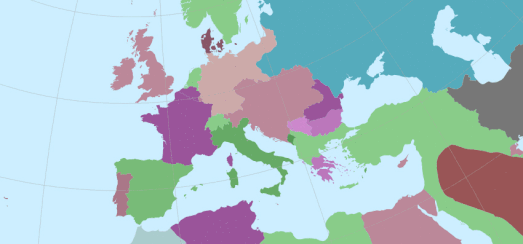Сообщения
Сообщения за июль, 2020
Which are New York's Greenest Boroughs?
- Получить ссылку
- X
- Электронная почта
- Другие приложения
The Future of 3D Tours
- Получить ссылку
- X
- Электронная почта
- Другие приложения
The German Road Accident Map
- Получить ссылку
- X
- Электронная почта
- Другие приложения
Where Foreign Born Residents Live
- Получить ссылку
- X
- Электронная почта
- Другие приложения
The Scots Place-Names Map
- Получить ссылку
- X
- Электронная почта
- Другие приложения
Comparing Map Projections
- Получить ссылку
- X
- Электронная почта
- Другие приложения
The Famous Greek Map of the World
- Получить ссылку
- X
- Электронная почта
- Другие приложения
74,762 Things To Do in America
- Получить ссылку
- X
- Электронная почта
- Другие приложения
The Big Butterfly Count
- Получить ссылку
- X
- Электронная почта
- Другие приложения
Biden is Winning the Money Race
- Получить ссылку
- X
- Электронная почта
- Другие приложения
The Epicenter of Covid-19
- Получить ссылку
- X
- Электронная почта
- Другие приложения
The American Crop Map
- Получить ссылку
- X
- Электронная почта
- Другие приложения
The Longer View of London
- Получить ссылку
- X
- Электронная почта
- Другие приложения
World Rail Maps
- Получить ссылку
- X
- Электронная почта
- Другие приложения
How Well Do You Know Your Battles?
- Получить ссылку
- X
- Электронная почта
- Другие приложения
Risk Assessment for Attending Events
- Получить ссылку
- X
- Электронная почта
- Другие приложения
Mapping This Year's Cleaner Air
- Получить ссылку
- X
- Электронная почта
- Другие приложения
The History of the World in Four Maps
- Получить ссылку
- X
- Электронная почта
- Другие приложения
UK Population Age
- Получить ссылку
- X
- Электронная почта
- Другие приложения
Microscopic Mapping
- Получить ссылку
- X
- Электронная почта
- Другие приложения
A Virtual Expedition to the South Pole
- Получить ссылку
- X
- Электронная почта
- Другие приложения
Where Americans are Wearing Masks
- Получить ссылку
- X
- Электронная почта
- Другие приложения
Train Tracking Live
- Получить ссылку
- X
- Электронная почта
- Другие приложения
The Long View of London
- Получить ссылку
- X
- Электронная почта
- Другие приложения
How To Reopen a Country of 1.3B People
- Получить ссылку
- X
- Электронная почта
- Другие приложения
























